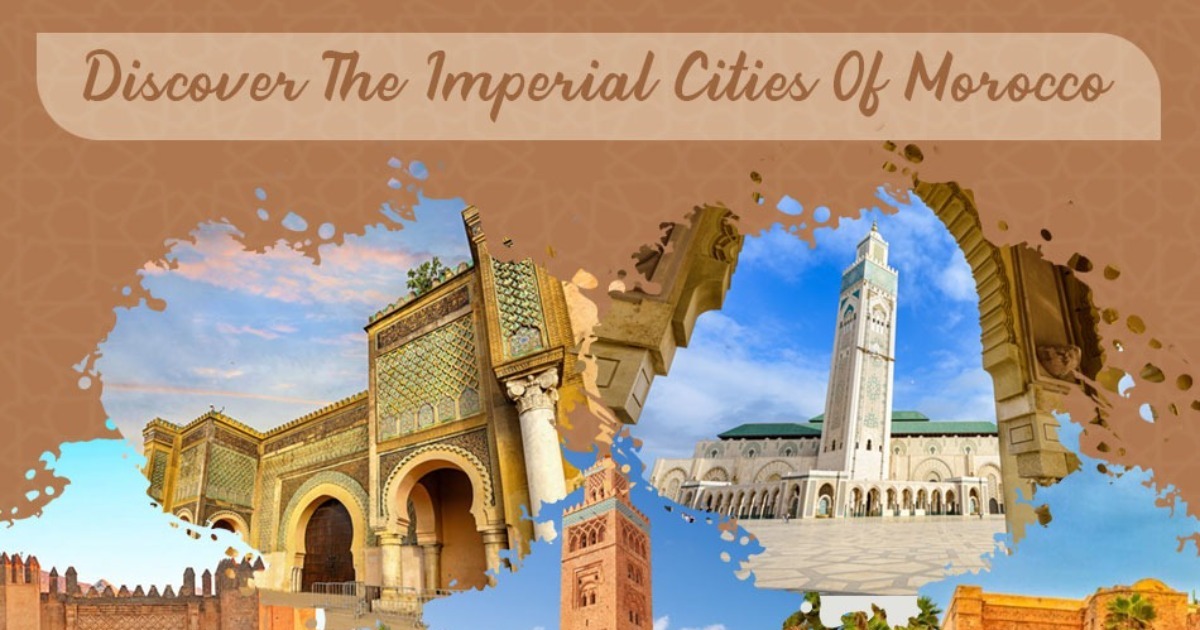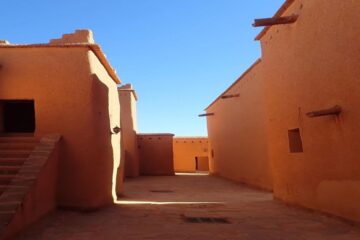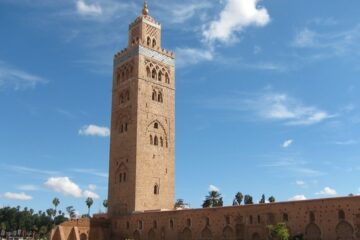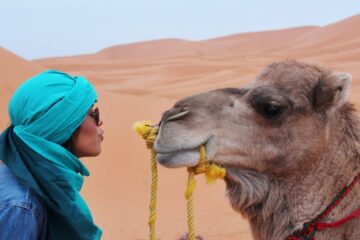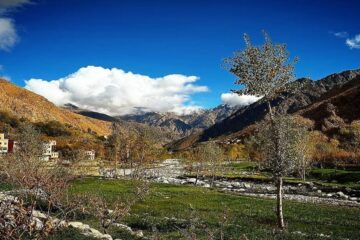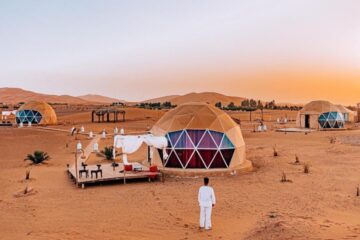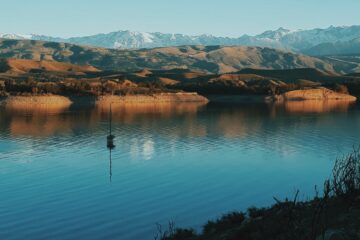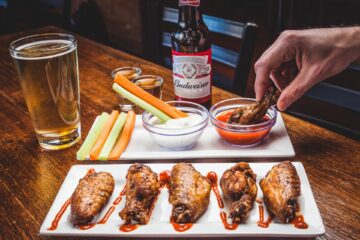Morocco has a long and illustrious history. Visitors to Morocco may take a tour of the four “Imperial Cities of Morocco,” a term that is often repeated but seldom explained. Since the 1600s, a king from the Alaouite Dynasty has ruled Morocco. However, prior to the present Dynasty, several reigning families ruled as sultans at various times since the Arab Conquest and Islamization of Morocco, and each time they moved the capital city. Rabat, Meknes, Marrakesh, and Fez have all served as Morocco’s capital towns at some point in history, which is why they are known as the Imperial towns of Morocco. This page will tell you more about their history and why they are worth seeing.
1: Rabat
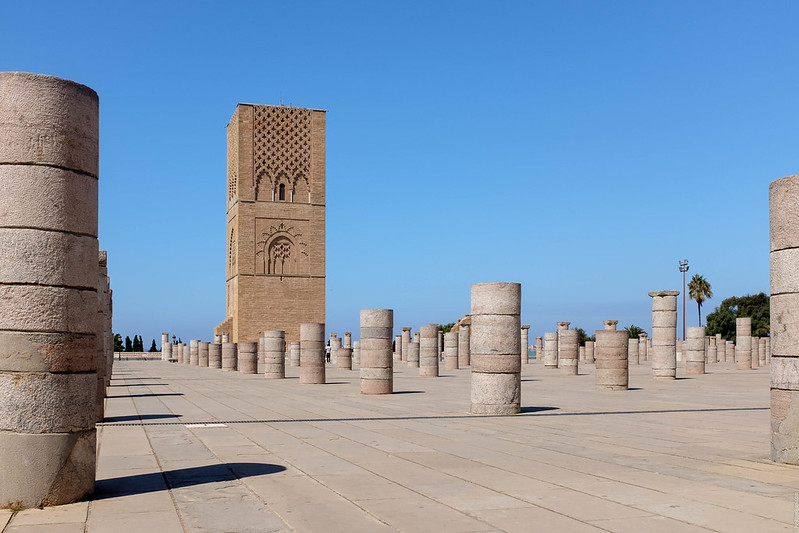
Rabat is Morocco’s current capital and the last imperial city. The settlement is situated near the mouth of the Bou Regrag River in the Atlantic Ocean. According to the 2014 census, its population is around 578,000 people. Rabat, Salé, and Temara create a metropolis with a population of nearly 1.8 million people. Food processing, textiles, and construction are among the industries found in this area.
The Almohad Dynasty established Rabat in the 12th century. When France formed a protectorate over Morocco in 1912, it designated this city as its administrative seat. Rabat’s old medina is a UNESCO World Heritage Site.
What should you see and do in Rabat?
The Hassan Tower:
The third caliph of the Almohad dynasty (Yaqub al-Mansur) dreamt of building the biggest mosque with the highest minaret, which prompted him to create the Hassan Mosque and its tower, known as the “Hassan Tower,” in 1195. However, following his death in 1199, the building was halted, and the tower now stands 40 meters tall.
The Chellah’s:
The Phoenicians constructed this historic site, which the Romans eventually took over. The Roman Forum, which the Romans used up until 40 AD, and the Chellah both have fortified remains. The ancient city was a Christian hotspot in the second century and remained the city of Christian Imazighen until the Arabs arrived. Chellah also served as a necropolis for the Almohad Royals throughout the Almohad Era.
The Oudaias Kasbah:
During the Almohad Dynasty in the 12th century, this fortification was erected. Many people and dynasties have left their imprints on this interesting location. Muslims who were fleeing Catholic Spain, for instance, built the winding stairs that lead from the kasbah to the coast in the 17th century. This site has just been updated, making it more user-friendly for both the feet and the eyes.
Mausoleum of Mohammed V:
This site, located near Hassan Tower, comprises the graves of King Mohammed V, King Hassan II, and Prince Moulay Abdellah. The white flooring and walls of this mausoleum, which was erected in 1971, are ornamented with granite and marble. The ceiling is built of green tiles to represent Islam’s hue, while the graves are fashioned from white onyx.
2: Meknes
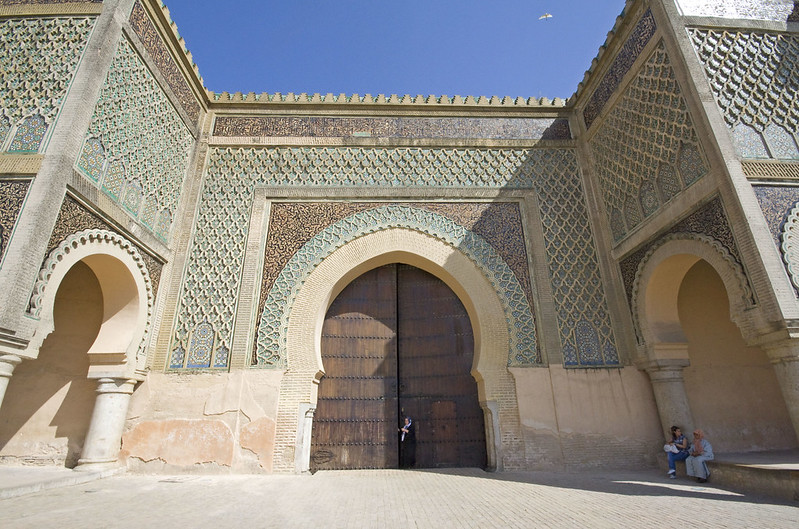
Meknes is in north-central Morocco and is the third imperial city. In the 11th century, the Almoravids established it as a military outpost. This city was the capital of Morocco during the time of the Alaouite monarch Moulay Ismail (1672–1727), and extensive defenses and gates were erected. According to the 2014 Moroccan census, the city has a population of around 632,000 inhabitants.
Visitors to Meknes will admire this magnificent city, whose architecture and design of its walls and defenses bear unique testimony to its imperial past.
What should you see and do in Meknes?
Volubilis Ruins:
Meknes’ primary tourist attraction is the historic Roman city of Volubilis. These remains, located approximately 30 kilometers north of Meknes, are among the most magnificent representations of Roman life that can be viewed today. This city was the capital of the Kingdom of Mauretania during AD 24-285. Visitors may picture the Roman way of life approximately 2000 years ago, thanks to the beautiful floor mosaics and huge Roman homes.
Bab El Mansour:
Bab Mansour is the major entrance to Meknes’ ancient city (Medina) and the imperial city districts. It was completed in 1732 and functioned as the ceremonial gateway to Moulay Ismail’s Kasbah (royal fortress). This magnificent gate has a stunning specimen of classic Zellige tiles and carved stones.
Moulay Ismail Mausoleum:
This Mausoleum was constructed to contain the grave of Moulay Ismail, the great Alaouite ruler who made Meknes his imperial capital during his 17th-century reign. Visitors may observe the carved masonry, magnificent tilework, and stucco ornamentation on the inside of this tomb, which exhibits the splendor of Moroccan religious décor. When entering the tomb, remove your shoes at the entryway, dress modestly, and tip the keeper.
Dar Jamai Museum of Moroccan Art:
This structure was constructed in 1882 as the Jama family’s mansion and was subsequently turned into the Museum of Moroccan Art in 1920. The museum is well-known for its richness in traditional painted wood and plaster design, as well as its exquisite Andalusian-style garden on the grounds.
Heri es-Souani:
This massive structure previously housed the imperial city’s storage granaries and horse stables. The complex’s arched doors remain intact despite the absence of a roof.
Qara Prison:
This renowned (or notorious) jail in Moroccan Darija is known as “Habs Qara,” also known as “the prison of Christian slaves.” The Alaouite Sultan Moulay Ismail ordered the construction of this prison, which had countless underground cells that could hold thousands of people, the majority of whom were European prisoners.
3: Marrakesh
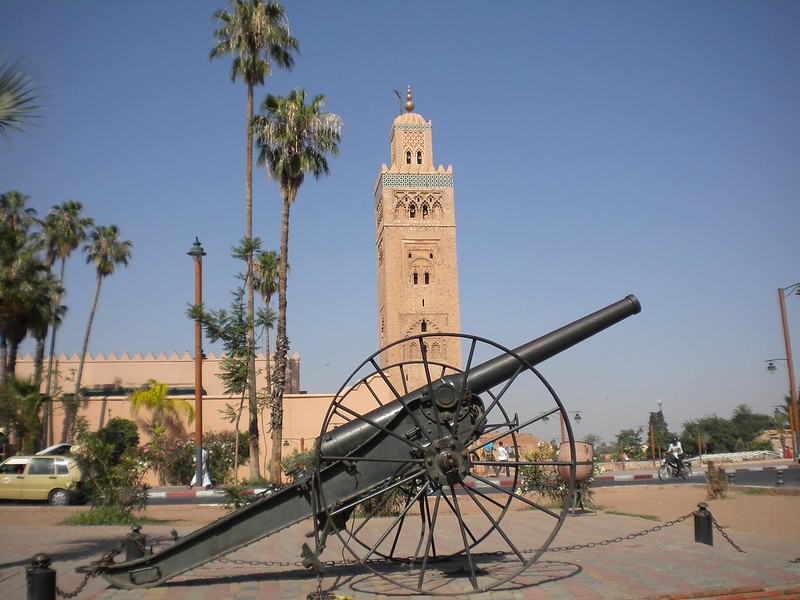
Marrakech is the second imperial city, and many believe it to be Morocco’s tourism hub. It is located 327 kilometers southwest of Rabat, 246 kilometers northeast of Agadir, and 239 kilometers south of Casablanca. With a population of little more than one million people, Marrakesh is Morocco’s sixth-biggest city.
Ali ibn Yusuf was the first to settle in the city in 1070. Marrakesh was given the appellation “Al Medina Al Hamra,” which means “The Red City,” because of the prominence of its red sandstone buildings.
What should you see and do in Marrakesh?
Jamaa El Fna:
This open-air plaza is by far Marrakesh’s most renowned location. Jamaa El-Fna is teeming with all types of artists, including storytellers, palm readers, singers, and snake charmers. Markets, restaurants, and cafés surround the area. While exploring, visitors may sip fresh squeezed orange juice. Some people compare Marrakesh to Las Vegas because of the vast crowds, action, and commotion of Jemaa El-Fna; thus, it may not be for everyone.
Mosque of Koutoubia:
This mosque is one of Morocco’s most prominent mosques. This structure was built with bricks, sandstone, and ceramic tiles by Almohad monarch Yaqub al-Mansur (1184–1199). It features 17 chambers supported by sturdy pillars and an arrow on its minaret. Outside the mosque, there is a huge area with gardens.
The Saadian Tombs:
During the reign of Ahmed al-Mansur in the 16th century, this site was constructed. It houses the graves of Saadian sultans and their families. The architectural beauty of the historical landmark is worth witnessing; tourists may marvel at the delicate wood carvings and the glittering zellige tilework.
The Bahia Palace:
Si Musa, Sultan Hassan I’s vizier, created this historical monument in 1860. It has a total area of 8000 square meters. This site grew well-known over time for its many enhancements and embellishments. The Andalousian-Moorish gardens, a mosque, a hot room, and fountains are all located inside the palace.
Gardens of Menara:
This is a large botanical garden near Jemaa El-Fna. The gardens were built during the rule of the Almohad dynasty in the 12th century and used as a training ground for warriors. It is a large green place with olive trees that is ideal for walking. The Menara Gardens are a popular site for both locals and visitors.
Garden of Majorelle:
These gardens, which were established in 1924, are named for their French architect and designer, Jaques Majorelle. This area has about 300 flora and 15 different bird species. The gardens provide a peaceful respite from Marrakesh’s bustling streets. The range of hues—the cobalt blue buildings, the green plants and bamboo, the pink paths, and the scarlet and blue flowers—may amaze visitors.
4: Fes
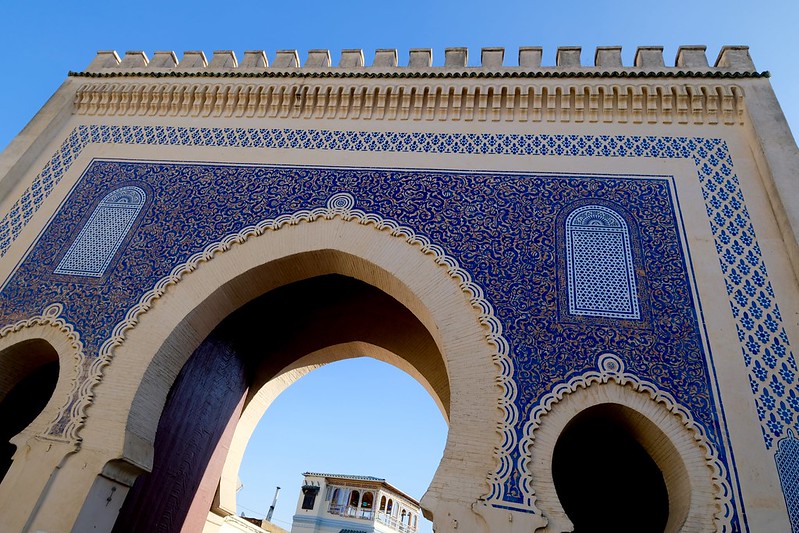
Fez is regarded as Morocco’s spiritual center and one of the world’s most important and prominent Islamic cities (together with Baghdad, Damascus, and Kairouan). Fes is the first imperial city and Morocco’s second-biggest city, with a population of about 2.5 million people. Between the Rif Mountains and the Middle Atlas Mountains in northeastern Morocco, 180 kilometers east of Rabat, is where the Idrissids constructed it in the ninth century.
Fez is now divided into three sections: the ancient city (known as the Medina and designated as a UNESCO World Heritage Site), the modern city (Ville Nouvelle), and Fez Jdid, which includes the Mellah (Jewish Neighborhood) and the Royal Palace.
What should you see and do in Fez?
The Fez Medina:
This historic district of the city is separated into two divisions. Fez El Bali is the city’s oldest walled district, home to the famed University Al Quaraouiyine and the Zawiya of Moulay Idriss II. The Merinids built the neighborhood of Fez Jdid, where the Royal Palace is today. Fez’s Medina is a major tourist site and was designated a UNESCO World Heritage Site in 1981. Many of its riads (houses) have been rebuilt and are again available for business as hotels, guesthouses, and restaurants.
Mausoleums and Tombs:
A zawiya is described as “an Islamic building and institution associated with Sufis.” It may operate as a center of worship, a school, a monastery, and/or a tomb.” Moulay Idriss II’s Zawiya is situated in Fez El Bali, which was named after the city’s founder. The Zawiya of Sidi Ahmed Tijani is also a well-known shrine for the students of Sidi Ahmed Tijani, the 18th-century founder of the religious order known as the Tariqa Tijaniyya.
Madrasas:
Madrasas are knowledge and learning institutes in Islam. UNESCO considers Fatima Al Fihria’s madrasa, University Al Quaraouiyine, to be the oldest continuously running institution in the world. Throughout history, the Merinid Dynasty placed a high value on the establishment of madrasas. The Madrasa of Seffarin in Fez El Bali is one such example, founded in 1271 by Sultan Abu Yusuf. Furthermore, Sultan Abu Al Hassan was the most productive Sultan in terms of madrasa building, such as Al-Attarine and Al-Messbahiyya. Bou Inania Madrasa, constructed by Sultan Abu Inania, is another significant madrasa. Finally, in 1670, the Alaouite Sultan constructed the grandest madrasa, the Cherratine Medrasa.
Fortifications:
Fez’s Medina is protected with walls that include watchtowers and gates. The walls’ earliest parts were built during the Almohad period. These walls’ circuits are interspersed by gates. Soldiers guarded these gates, which were closed at night. The most notable gates of Fez El Bali are Bab Mahrouk (west), Bab Guissa (northeast), and Bab Ftouh (southeast). The primary entrances of Fez Jdid are Bab Dekkakin, Bab Semmarine, and Bab El Amer. The most picturesque gate, however, is Bab Boujloud, or the Blue Gate.
Approximately thirteen Kasbahs were built over the city’s history. A kasbah is an ancient military fortress used for defenses, military planning, and command. Kasbah An-Nouar, Kasbah Tamdert, and Kasbah Cherrada are among them. In the late 16th century, the Saadians constructed two noteworthy bastions, Borj Nord and Borj Sud.
Tanneries:
The tanning industry is one of Fez’s primary tourist attractions, with the world’s oldest tannery thought to be in Fez. There are three tanneries in the city, the biggest of which is situated near Saffarin Madrasa. The tanneries have dye-filled circular stone wells. These tanneries’ leather goods are shipped all over the globe.

